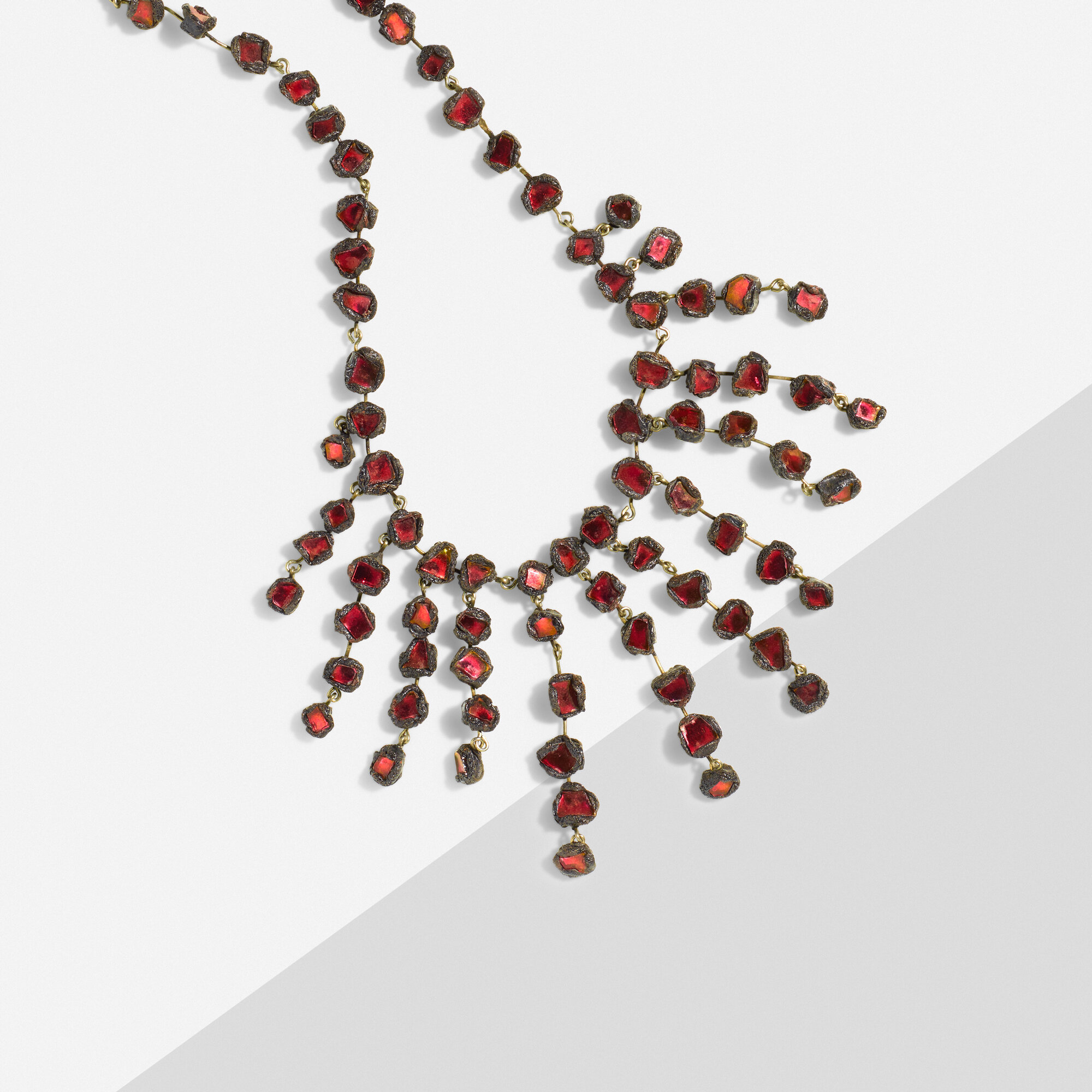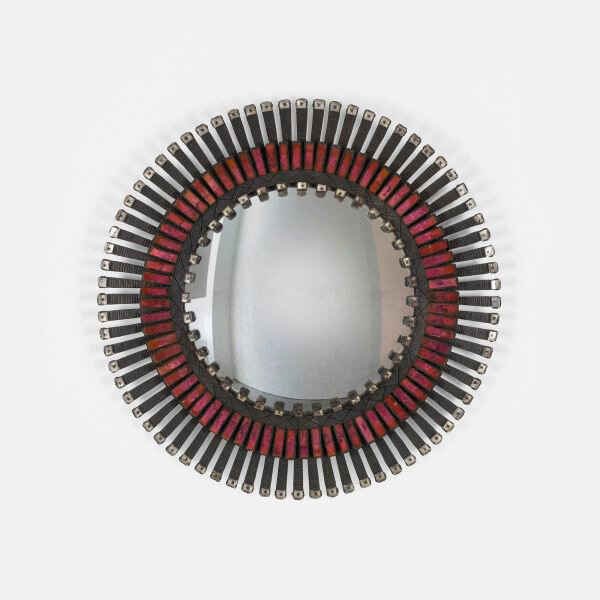206
206
Of talosel resin and mirrored glass
17 ½ ins; Gross weight 30.6 dwts
estimate: $2,600–3,000
result: $2,500
follow artist


The subtle playfulness of Line Vautrin’s designs combine a delightful melding of delicate forms and varied mediums. An artist, business woman, and innovator, she charted her own path and left a lasting impression on the jewelry and decorative arts worlds.
Born in 1913, Line Vautrin, learned at a very young age the techniques of metalworking in her families’ foundry. She mastered the techniques of casting, gilding and chasing bronze, which became her metal of choice; her works in bronze featuring a tactile and hand-worked quality. She was curious by nature and fascinated by ancient cultures. A trip to Egypt allowed her to study ancient techniques of metalsmithing. She also became interested in hieroglyphics and pictograms, incorporating symbolic representations and rebus puzzles in a whimsical way into her objet d'art and jewelry.


Line Vautrin was very much ahead of her time, and a self-made woman. As she became more established and recognized in her medium, Vautrin began to experiment with a synthetic resin that came onto the market just towards the end of World War II. She dubbed the material Talosel — an acronym fused between “acetate de cellulose elaboré” — a very clever adaptation that she patented in the 1960s. The tactile quality, lightness and malleable property of the substance allowed varied outcomes so that the final product could appear similar to slate, bone, wood, or have a shimmering effect. With artistic prowess, Line Vautrin used talosel on lamp bases, furniture, boxes, mirrors and jewelry, each piece assembled by hand and decorated using various techniques of abrasion, heating, scoring, fragmentation, to create unique and stunning pieces of wearable art and functional design.
Line Vautrin 1913–1997
Known for her exquisite creations in the field of decorative arts, particularly in jewelry and objets d'art, French artist and designer Line Vautrin was born in Paris in 1913. Her family owned a bronze foundry, where Vautrin began to teach herself gilding and metalwork techniques; she had designed her first pieces by the age of 21 and by the 1940s had been dubbed the “poetess of metal” by Vogue.
Vautrin worked briefly for designer Elsa Schiaparelli in the 1930s. In 1937, she showed her own buttons and jewelry at the Exposition Universelle in Paris, introducing her works to an international audience. She soon opened her own studio near the Champs-Élyséees, offering her own works that embraced fantasy and play, and often included riddles. Her creations became highly sought-after, and Vautrin quickly gained a reputation as one of the most innovative and imaginative designers of her time. Devoted to experimentation, Vautrin perfected her own formula for cellulose acetate resin in 1955, trademarking it as Talosel.
In 1969, Vautrin and her daughter founded the Association for the Development of the Manual Arts, a craft school where she taught metalworking and jewelry making. The school also offered some of the raw materials Vautrin employed in her own practice, such as mirrors and sheets of Talosel.
Vautrin's designs have been exhibited internationally, including at the Musée des Arts Décoratifs in Paris and the Museum of Modern Art in New York. She also won numerous awards, including the Légion d'honneur and the Grand Prix des Arts Décoratifs, and her works continue to be highly sought-after by collectors today.
Auction Results Line Vautrin